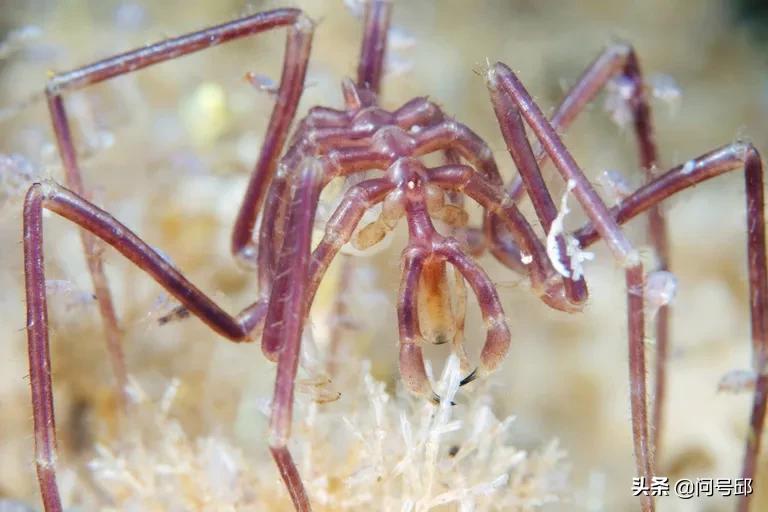
Sea spiders are long-legged marine arthropods that inhabit oceans around the world, from the cold Southern Ocean to the warm Caribbean. There are over 1,000 species of sea spiders, and their diversity is extraordinary, from their striking color combinations to their huge size differences.
Sea spiders are fascinating creatures, and scientists have a lot to learn about them. Here are the 9 most interesting facts about sea spiders.
Sea spiders are found in tide pools around the world, but unlike many other shallow water animals, they are not confined to coastal areas. In fact, sea spiders have been spotted at 4,828 meters in the deepest part of the ocean.
Sea spiders do not form webs, and they are not arachnids like tarantulas or domestic spiders. However, they are not completely unrelated. Like real spiders, sea spiders belong to the phylum arthropods and the subphylum chelatum. The difference is in the spider class: the real spider is the arachnid, while the sea spider is a member of the spider family. This means that, in terms of taxonomy, sea spiders are closer to real spiders than to other arthropods such as crustaceans and insects.
This similarity is undeniable, and scientists consider this genetic relationship to be "mysterious."
There's a good chance you'll overlook sea spiders in the tidal pools, especially in warm water lagoons. This is because the sea spiders that live in these places are small, only about a millimeter. Some are so small that their muscles have only one cell. These nearly invisible creatures are very common, so there's a good chance you'll encounter them without knowing them.
Most sea spiders are extremely small, while those that live deep in the polar oceans are relatively large, with legs more than 50 centimeters long. Their "gigantism" is an adaptation to the environment that helps them live comfortably under extreme conditions. Large animals have a lower surface area and volume, so they radiate less body heat, which allows them to remain warm in very cold water.
Sea spiders have a special pair of legs that are used to lay eggs, known as "egg-holding limbs". After the female sea spider lays eggs, the male sea spider fertilizes them and attaches them to its egg-holding limbs until they hatch. Male sea spiders are responsible for incubating eggs until they hatch.
Sea spiders do not have the ability to form webs, instead, they use tubular proboscis (nose-like structures) to suck up the juices of their prey. The top of the beak has 3 lips, and some even have teeth. Once inside the nose, the juice is mixed with enzymes for digestion. Sea spiders feed on sponges, jellyfish, sea anemones and other prey. Scientists have even observed a sea spider cutting off the tentacles of a sea anemone in order to suck the juice out later.
Sea spiders have no lungs and gills, nor do they have a respiratory system. Instead, the oxygen they need to get through the exoskeletons into their tissues. When their digestive system contracts, oxygen circulates through their bodies, allowing blood to flow through the animal's entire circulatory system. This unique process, known as intestinal peristalsis, is only observed in sea spiders.
Sea spiders have been living on Earth for nearly 500 million years. Like few other multicellular animals, they have experienced multiple mass extinctions, extreme climate change, and even asteroid impacts. One possible explanation for the incredible toughness of sea spiders is that they don't rely on calcified exoskeletons, but scientists believe there's more to discover about the incredible survival of sea spiders.
The body of the sea spider consists almost entirely of long legs (four, five or six pairs) and a tubular long beak. This leaves very little space for the digestive organs, but it's not a problem because sea spiders put their internal organs in their legs. These organs consist of tubular "intestines" that chemically convert food into nutrients, which then contract, transporting nutrients to other parts of the spider. This contraction also contributes to the circulation of oxygen.